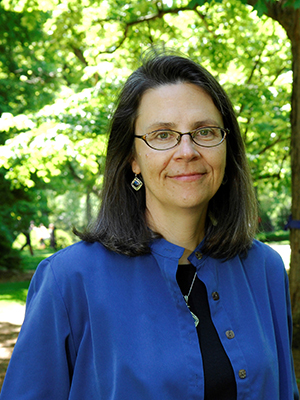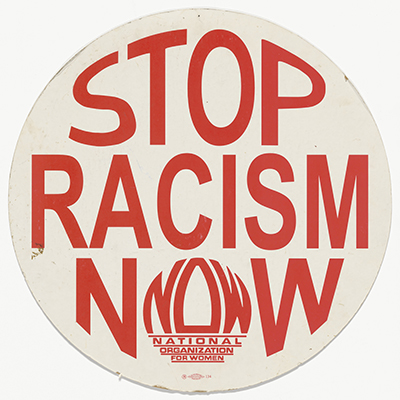New research uncovers crucial role of activist lawyers in expanding women’s rights

The history of women’s rights in the United States is inextricable from the history of social movements. In the nineteenth century, married women fought for legal personhood and the right to own property independent of their husbands. In the early 1900s, women mobilized for the right to vote. And beginning in the 1960s, “second-wave” feminists fought a host of battles, for the right to work after marriage, equal pay, access to college sports, and more.
Cornelius Vanderbilt Professor of Sociology Holly McCammon studies how U.S. women have banded together to achieve political and social change that bolsters their rights. Much of her early work focused on nineteenth- and early-twentieth-century movements, but her research kept turning up studies about second-wave feminism. As someone with a strong interest in how the law shapes people’s everyday lives, McCammon became interested in recent court cases affecting women’s rights. She discovered there was very little scholarship on the connections between case outcomes and second-wave feminist movements, and she decided to fill the void.
“It all started coming together for me. I wanted to look at some of the feminist lawyers who have worked very hard not only to broaden women’s rights under the law, but also to introduce more legal equality between men and women,” McCammon said.
The research was challenging from the start, as McCammon couldn’t find a single comprehensive list of U.S. Supreme Court cases addressing women’s rights. So she created one, locating about 150 cases that have addressed the issue since 1960. She then focused on cases argued by what she calls “cause lawyers”: those who were affiliated with or sponsored by legal activist organizations such as the American Civil Liberties Union (ACLU) or National Organization for Women (NOW).
Ruth Bader Ginsburg, the associate Supreme Court justice who died in 2020, is perhaps the best known of the lawyers McCammon studied. Ginsburg, who was famously asked by the dean of Harvard Law School to justify “taking the place of a man,” was a cause lawyer in the early part of her career. A co-founder of the Women’s Rights Project at the ACLU, she won a number of key victories, including the Supreme Court’s 1971 Reed v. Reed ruling that the Equal Protection Clause of the Fourteenth Amendment applies to women.

But as McCammon found, many of the most inspiring cases involved people whose names are not in most history books. She points to a group of Black women who were plaintiffs in early sexual harassment cases—including one brought by Diane Williams, who was actually a lawyer with the U.S. Justice Department. According to McCammon, Black women were (and often still are) a prime target for workplace harassment motivated by a combination of misogyny and anti-Black racism.
“These women had to come forward before we even had a name for sexual harassment. It takes real courage to get out ahead of the law when the very harm you’re experiencing doesn’t even have a name yet,” she said.
McCammon also found inspiration in Janet Benshoof, a cause lawyer who was incredibly savvy in the way she approached conservative-leaning courts. When Benshoof knew she was unlikely to win a case, she often employed a rhetorical strategy called heresthetics: a tactical way of driving a wedge between members of the opposition. She made arguments that were likely to split moderately conservative justices from those who were farther right, thereby limiting her losses. A ruling that might have broadly rejected her foundational claims became a more targeted ruling against only the circumstances of her specific case. This left room for her or other lawyers to file later cases that attacked the same issue from a different angle.
Overall, McCammon found that Supreme Court cases were more likely to result in the expansion of women’s rights when argued by cause lawyers like Ginsburg and Benshoof. Other factors, such as activists’ access to the political system and the existence of legal precedents, also played a role in outcomes. Hopefully, McCammon said, her findings will encourage social activists to think about the myriad ways they can obtain justice for their causes. She points out that universities—including Vanderbilt—have instituted African American and women’s studies programs because of student pressure on university leadership. Workplace movements have led to improved conditions for LGBTQ employees. And activist politicians such as John Lewis, Alexandra Ocasio-Cortez, and others have worked to accomplish their goals through legislation.
“I could see an aspiring young lawyer reading this paper and saying, ‘Hey, this could be a really fruitful area to work in.’ It wouldn’t have to be about women’s rights. It could be about other important issues, such as climate change,” McCammon said. “When people think about what a social movement is, the image in their heads is often a protest march. That’s a very powerful and public way to draw attention to a problem, but I think we sometimes miss that social movements operate in a whole bunch of other places, too.”
Read McCammon’s full paper, “The Supreme Court as an Arena for Activism: Feminist Cause Lawyering’s Influence on Judicial Decision Making.
